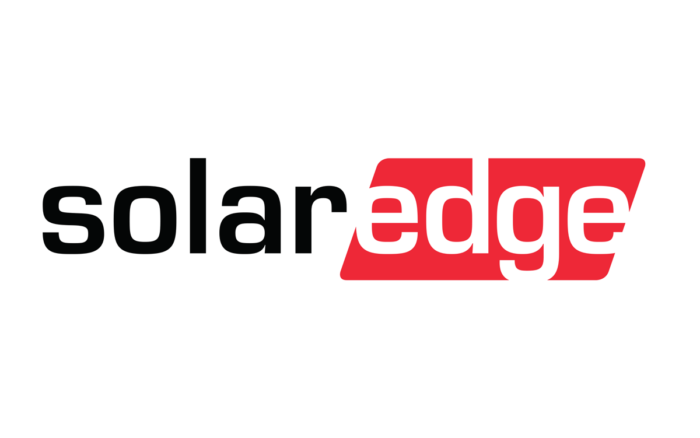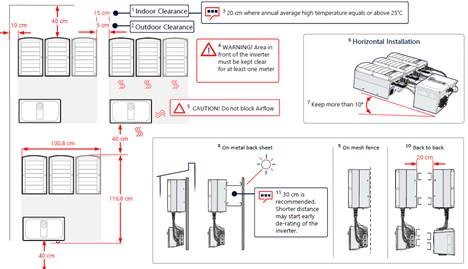Heat Dissipation of Commercial Inverters and Management

As system sizes become larger, inverter placement must to be considered to ensure the ongoing performance of the PV system. Installing inverters indoors offers many advantages over external installations. These include:
- More consistent operating temperatures
- Reduced exposure to environmental conditions (sun, rain, snow)
- Ease of servicing
- Restricted access to authorised personal
However, consideration must be given to the heat generated by inverters in indoor installations. The amount of heat generated by the inverter depends on its DC/AC oversizing ratio, conversion efficiency, model type and on the amount of power it is generating at any given time.
What is temperature derating.
Temperature derating occurs in all solar inverters. The degree to which it occurs depends on the manufacturer and topology.

When ambient air temperature rises, inverters respond by reducing their output current and power. This power reduction process is referred to as “de-rating”. The intention of re-rating is to protect the sensitive components within the inverter and prolong their lifetime. Therefore, as the installer, you should provide an operating environment inline with the operating window of the inverter and adhere to inverter clearance requirements to minimise the impact of derating.
The graph below shows the re-rating curve of the Synergy range. Up to 50
oC ambient air temperature (uncomfortably hot), the inverter will operate at full capacity. Beyond this temperature, the current begins to reduce along with power production. At 60
oC, the inverter shuts down to prevent damage to internal components. Looking at alternative products in the market, temperature derating is occurring at lower temperatures.
 Calculating ventilation requirements.
Calculating ventilation requirements.
Indoor ventilation or air-conditioning requirements depend on the number of inverters, installation power, room size, other heat sources (machinery and switchboards) and the existing room ventilation systems. Using these documents in consultation with an appropriately qualified engineer, you can design an inverter room with the correct cooling potential to avoid generation losses whilst maximising asset lifetime.
Summary
- Ensure appropriate clearance between inverters
- Allow passive airflow through inverter rooms
- Calculate heat gain if ventilation isn’t present in proposal installation location
- Consider AC switchgear and cabling and the impact of temperature derating on their performance
Information courtesy of SolarEdge Technologies. Browse the full range at
CCL Components.
 As system sizes become larger, inverter placement must to be considered to ensure the ongoing performance of the PV system. Installing inverters indoors offers many advantages over external installations. These include:
As system sizes become larger, inverter placement must to be considered to ensure the ongoing performance of the PV system. Installing inverters indoors offers many advantages over external installations. These include:
 When ambient air temperature rises, inverters respond by reducing their output current and power. This power reduction process is referred to as “de-rating”. The intention of re-rating is to protect the sensitive components within the inverter and prolong their lifetime. Therefore, as the installer, you should provide an operating environment inline with the operating window of the inverter and adhere to inverter clearance requirements to minimise the impact of derating.
The graph below shows the re-rating curve of the Synergy range. Up to 50oC ambient air temperature (uncomfortably hot), the inverter will operate at full capacity. Beyond this temperature, the current begins to reduce along with power production. At 60oC, the inverter shuts down to prevent damage to internal components. Looking at alternative products in the market, temperature derating is occurring at lower temperatures.
When ambient air temperature rises, inverters respond by reducing their output current and power. This power reduction process is referred to as “de-rating”. The intention of re-rating is to protect the sensitive components within the inverter and prolong their lifetime. Therefore, as the installer, you should provide an operating environment inline with the operating window of the inverter and adhere to inverter clearance requirements to minimise the impact of derating.
The graph below shows the re-rating curve of the Synergy range. Up to 50oC ambient air temperature (uncomfortably hot), the inverter will operate at full capacity. Beyond this temperature, the current begins to reduce along with power production. At 60oC, the inverter shuts down to prevent damage to internal components. Looking at alternative products in the market, temperature derating is occurring at lower temperatures.
 Calculating ventilation requirements.
Indoor ventilation or air-conditioning requirements depend on the number of inverters, installation power, room size, other heat sources (machinery and switchboards) and the existing room ventilation systems. Using these documents in consultation with an appropriately qualified engineer, you can design an inverter room with the correct cooling potential to avoid generation losses whilst maximising asset lifetime.
Summary
Calculating ventilation requirements.
Indoor ventilation or air-conditioning requirements depend on the number of inverters, installation power, room size, other heat sources (machinery and switchboards) and the existing room ventilation systems. Using these documents in consultation with an appropriately qualified engineer, you can design an inverter room with the correct cooling potential to avoid generation losses whilst maximising asset lifetime.
Summary
